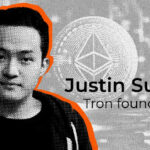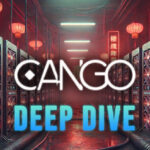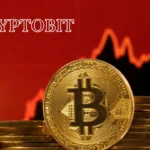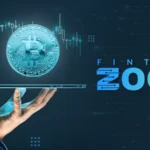Velocity is not only a problem for blockchain, however a deciding issue between adoption and obsolescence. If Web3 can not match the seamless expertise that customers anticipate, it would not matter how distributed or progressive it’s.
Present growth state speaks quantity: Based on the A16Z Builder Power Dashboard, Crypto builders monitor the place they’re focusing their efforts. In infrastructure growth, Layer 1 and Layer 2 tasks account for a few fifth of the actions, with exercise that accounting for one third of their segments. Given that the majority of those tasks are targeted on offering excessive transaction speeds with out the corresponding excessive charges, it’s clear that scalability and processing time are nonetheless main constraints within the trade.
Nevertheless, blockchain scalability shouldn’t be the one lens to evaluate transaction velocity. Attaining the very best transaction per second is just not the tip. It is a approach to enhance your consumer expertise. The realms the place Web3 is gaining probably the most traction: buying and selling and gaming – quick funds will not be luxurious. It is a requirement to compete with the present Web2 place.
Defi and buying and selling
Demand for chain buying and selling is rising quickly. Based on A16Z’s annual Crypto State of Crypto Report, the Decentralized Change (DEXS) at the moment handles 10% of Spot Crypto buying and selling. It is a dramatic change from simply 4 years in the past when the centralized alternate (CEXS) dominated 100% of the market.
In the meantime, the whole worth of DEFI is locked (TVL) is anticipated to rise above $100 billion for the primary time since 2021, with continued growth of analyst tasks persevering with, with DEFI anticipated to develop at a CAGR of 45% till 2032.
Nevertheless, Web3 is just not competing in vacuum. Legacy finance is just not static. If an on-chain buying and selling platform desires to separate customers from Tradfi, it ought to provide the identical velocity, seamless UX and reliability as platforms like Robinhood and Constancy. In actuality, blockchains don’t match uncooked speeds with Tradfi’s centralized servers. Physics, delays and decentralization make it unimaginable. However that is not the place Web3 wins. That edge is just not measured in milliseconds. That is measured in reliability, finality and programmable finance.
The actual battle is not nearly velocity of execution. It is about how a lot belief, effectivity and adaptability Web3 can inject into its monetary stack. On-chain buying and selling is just not about making Tradfi out of date. That is constructing a monetary system the place endibility is instantaneous, markets are open and velocity is beneficial for belief relatively than intermediaries.
Construct your personal sport studio
The sport has seen a flash of mainstream curiosity, from the early surge in Axie Infinity to the Collectibles Increase of the NBA Topshot, however long-term adoption stays elusive. This yr, Ton emerged as a hub for blockchain-based gaming, with viral hits like Hamster Fight, Idea, and Katizen. These tendencies recommend that blockchain can add new layers of possession and financial incentives to the sport, however the success of the virus is just not equal to sustainability.
The actual alternative lies in rapid asset settlement, true participant possession, and the permitted financial system, however provided that blockchain expertise can function at a velocity that’s indistinguishable from conventional sport servers. If delays in buying and selling or excessive charges create friction, Web3 video games danger being novel relatively than revolution. It isn’t a elementary change within the trade, it is a area of interest experiment.
In contrast to Defi and on-chain buying and selling, which noticed institutional help, blockchain video games are nonetheless within the experimental stage. Builders face a wide range of challenges. Merchants might tolerate some buying and selling prices, however players don’t. If charges and latency disrupt gameplay, blockchain titles can not compete with the seamless expertise of conventional gaming. So, some studios who’re sad with their current infrastructure have constructed their very own chains, reminiscent of Sky Mavis with Ronin and Dapper Labs with Stream.
This means an unmet want. Web3 video games require infrastructure tailor-made for quick, low-cost transactions. As an alternative of forcing builders to do these points themselves, the trade ought to present as invisible blockchain as highly effective ones. In spite of everything, sport creators have to concentrate on constructing an immersive expertise relatively than architecting new networks from scratch.
The necessity for a high-speed blockchain
When blockchain affords excessive demand use circumstances reminiscent of on-chain buying and selling and gaming, the trade wants a very scalable, quick community that may match the seamless expertise of Web2. Solana’s speedy rise exhibits demand for quick and cheap block house, however the battle towards uptime highlights the problem of offering scalable speeds with out compromising. Even Ethereum’s Layer 2 options introduce a singular set of challenges whereas rising velocity and cost-effectiveness.
The journey is appropriate, however the clock is ticking. Blockchain infrastructure should evolve shortly sufficient to supply Web3 guarantees earlier than Web2 incumbents can take in its greatest concepts. Velocity is vital, however velocity alone is just not sufficient. The actual aim is not only to match Web2 efficiency. It is about constructing a dependable, open, configurable basis that Web2 can not replicate.
Writer’s Bio
Tristan Dickinson is Chief Advertising and marketing Officer of Exsat Community, the docking layer of Bitcoin. A dynamic and visionary advertising government, Tristan brings a wealth of expertise from the banking, monetary providers, Web3 and expertise sectors.












